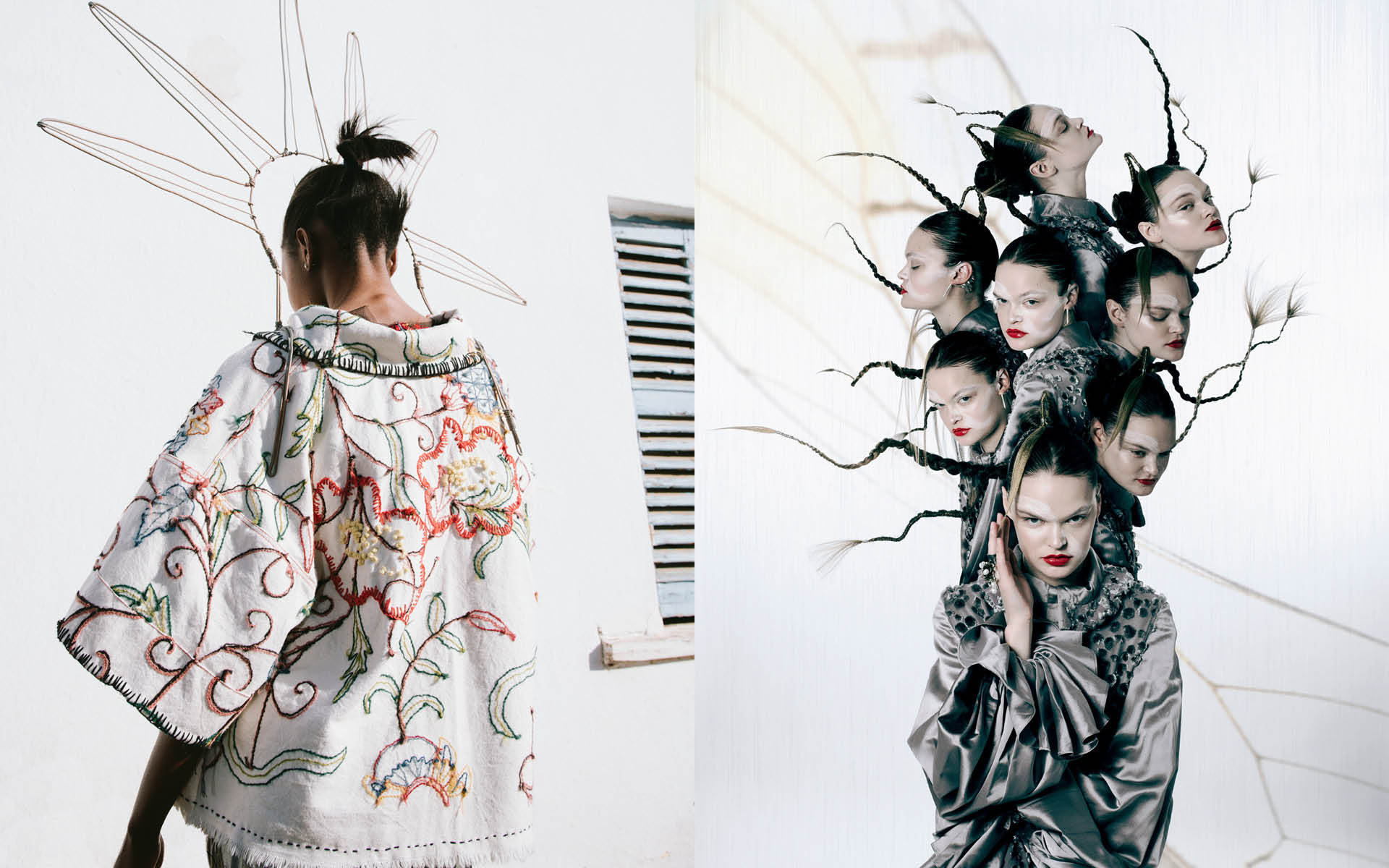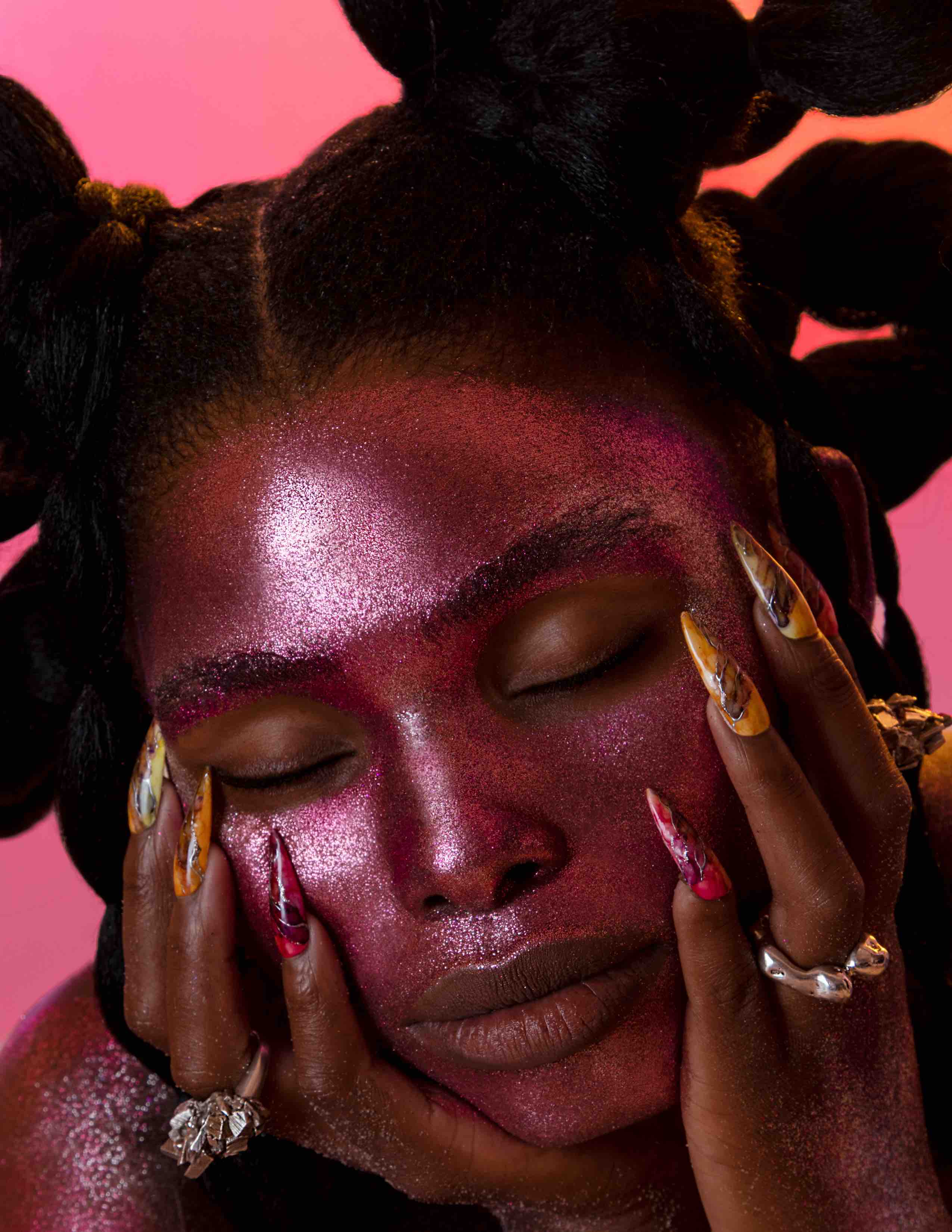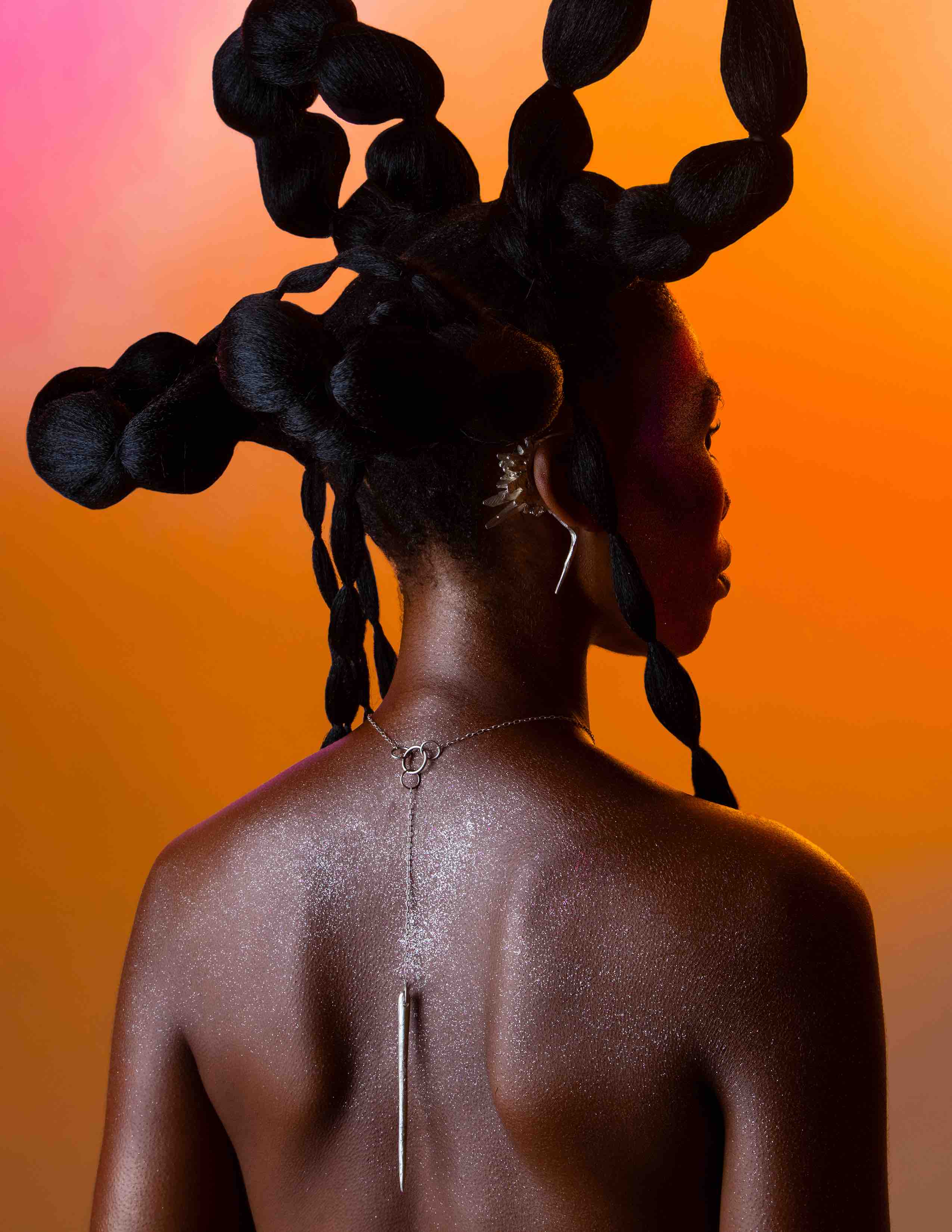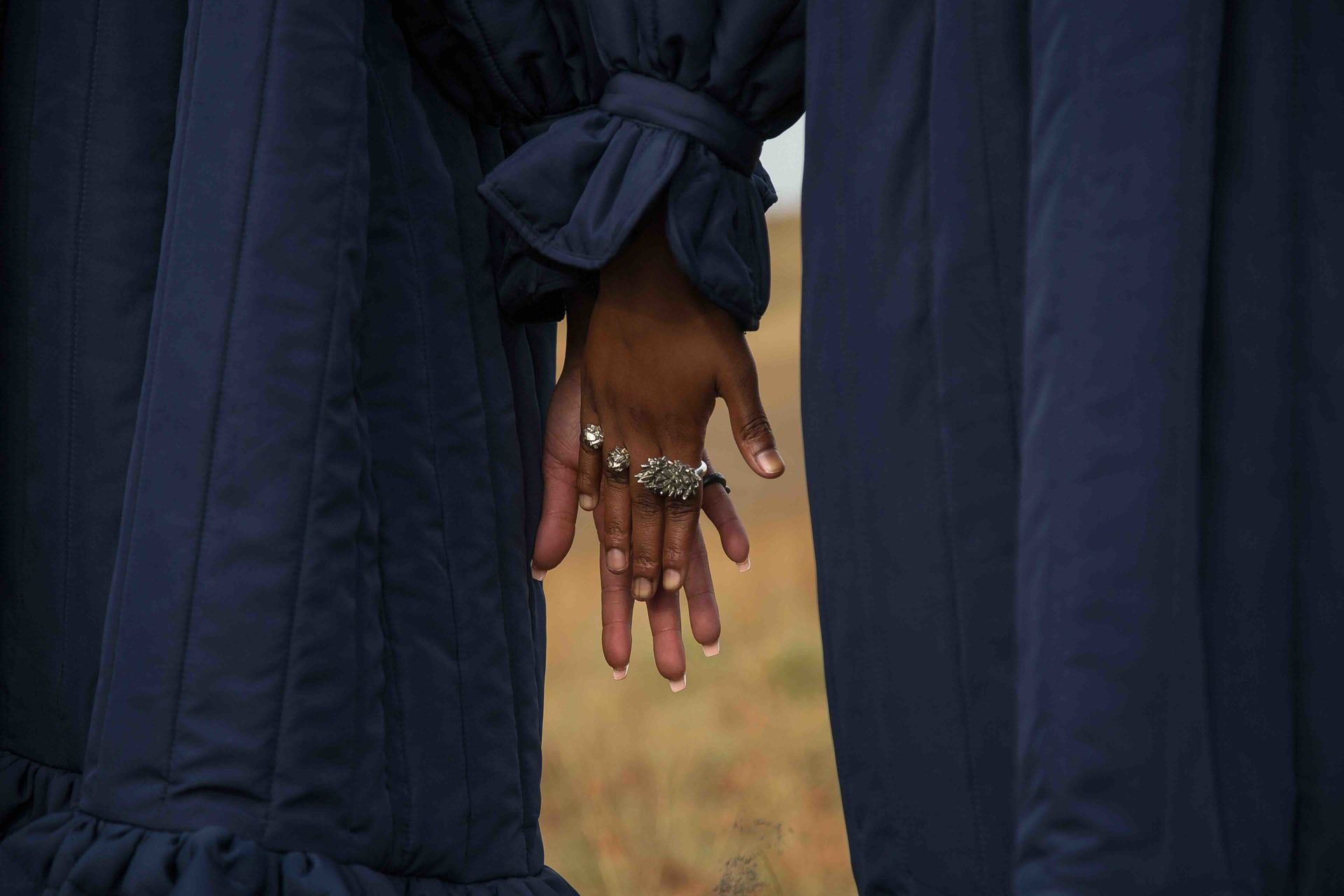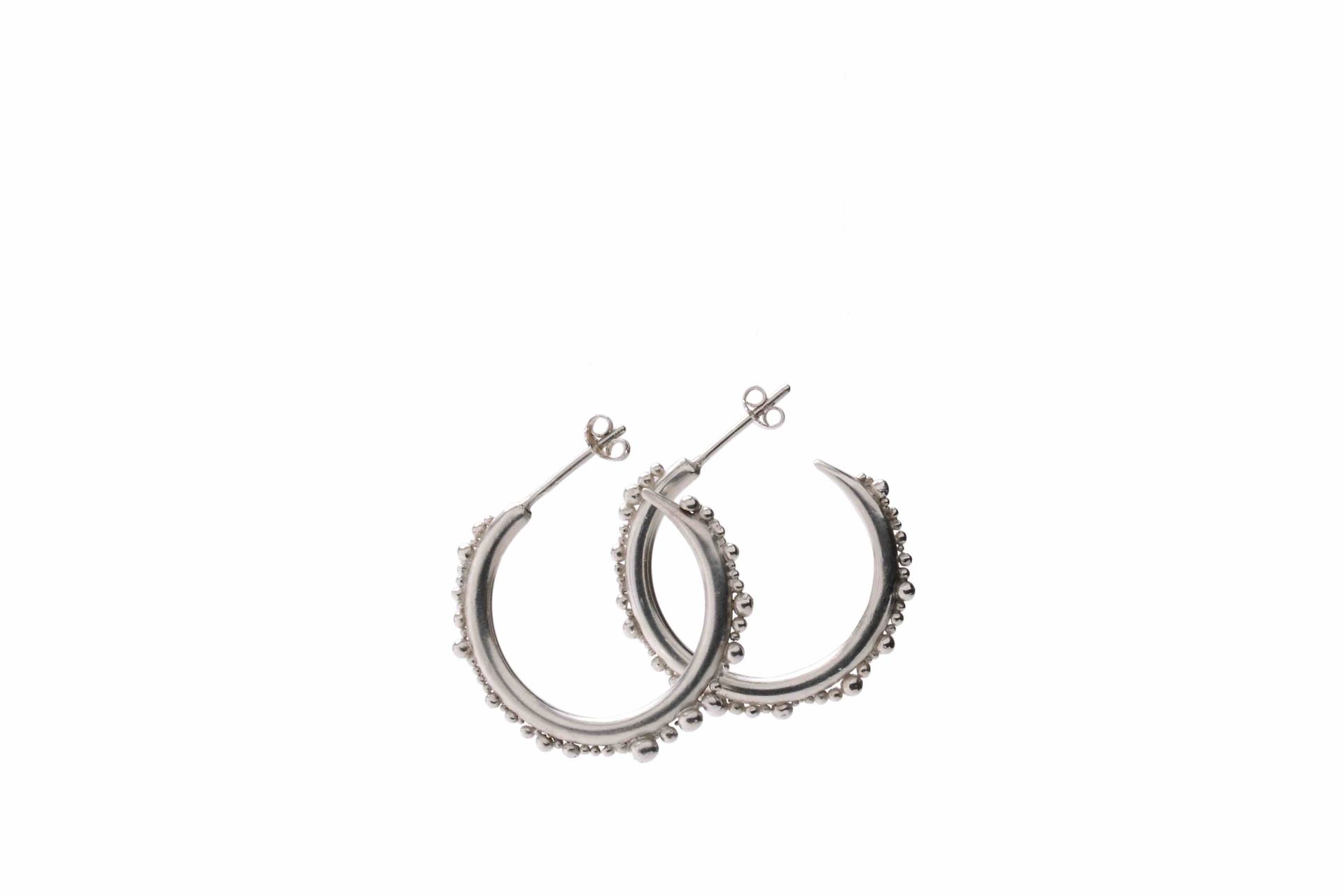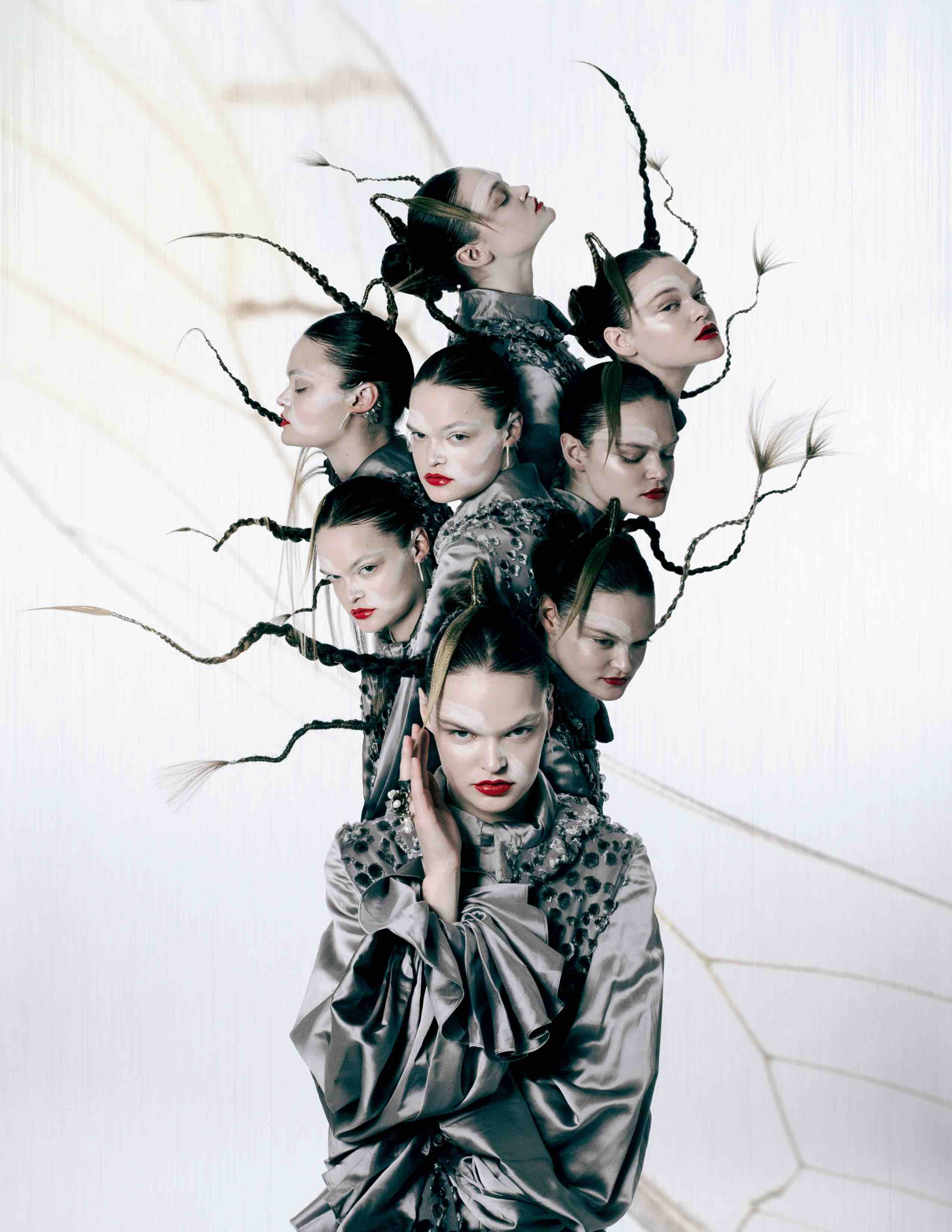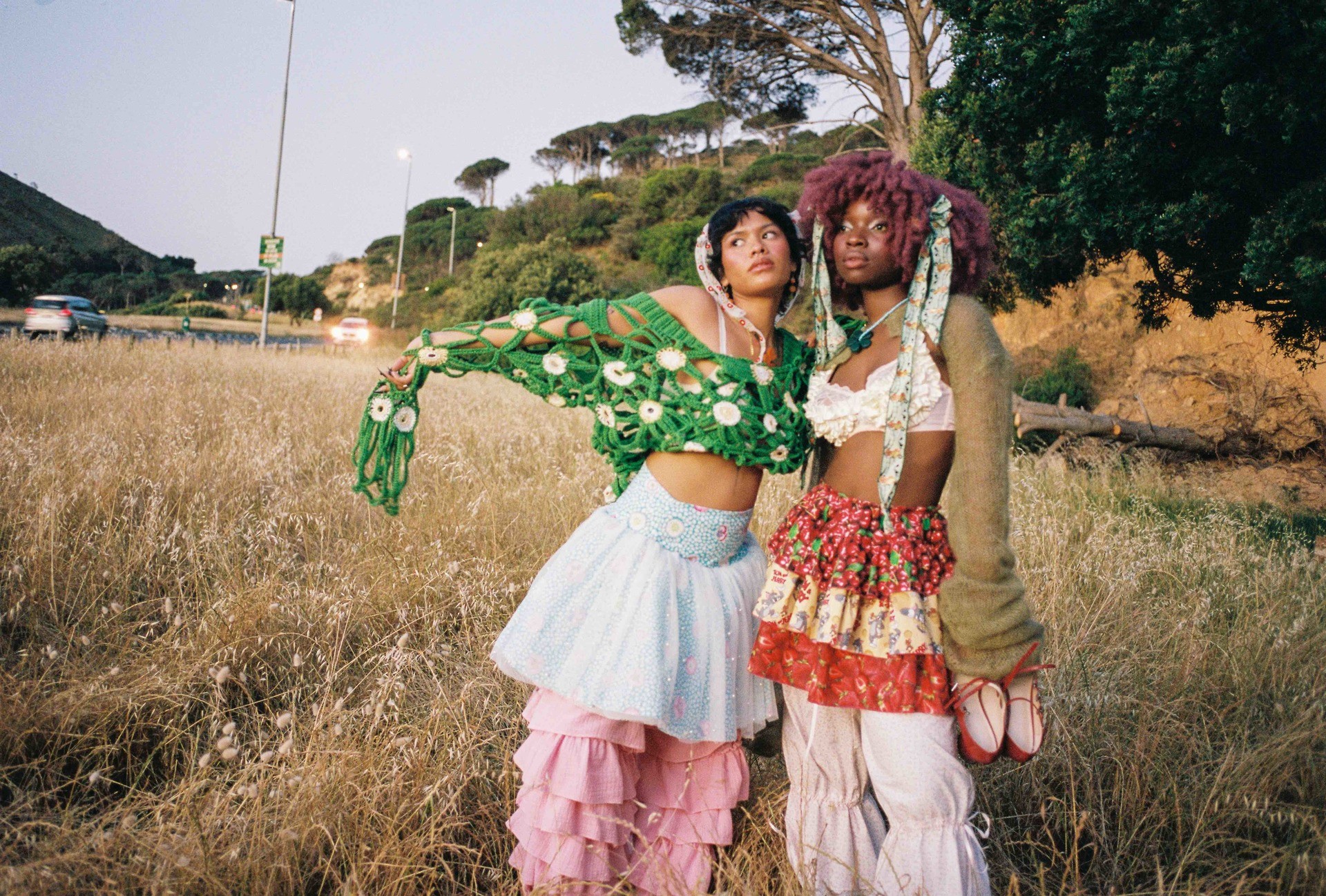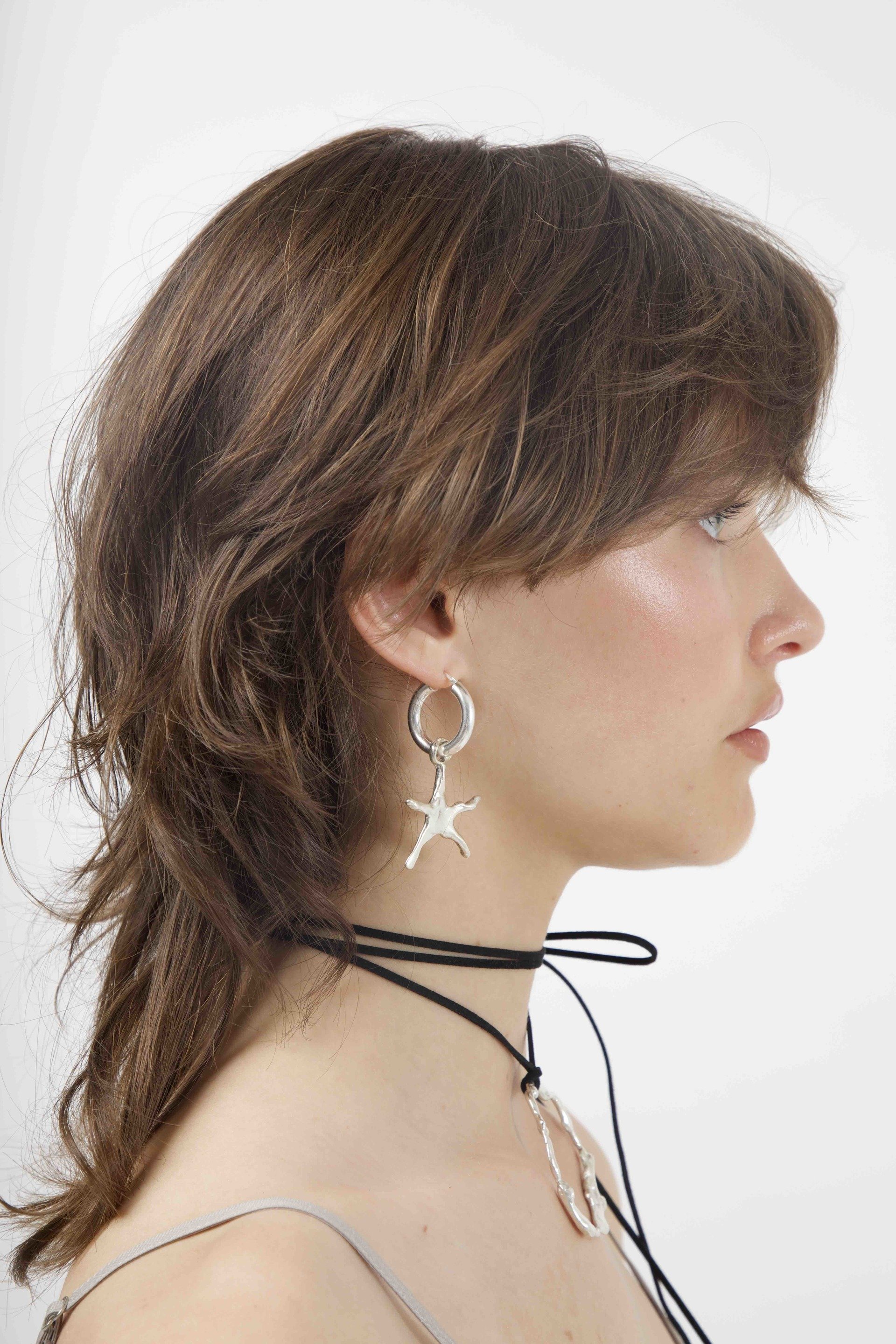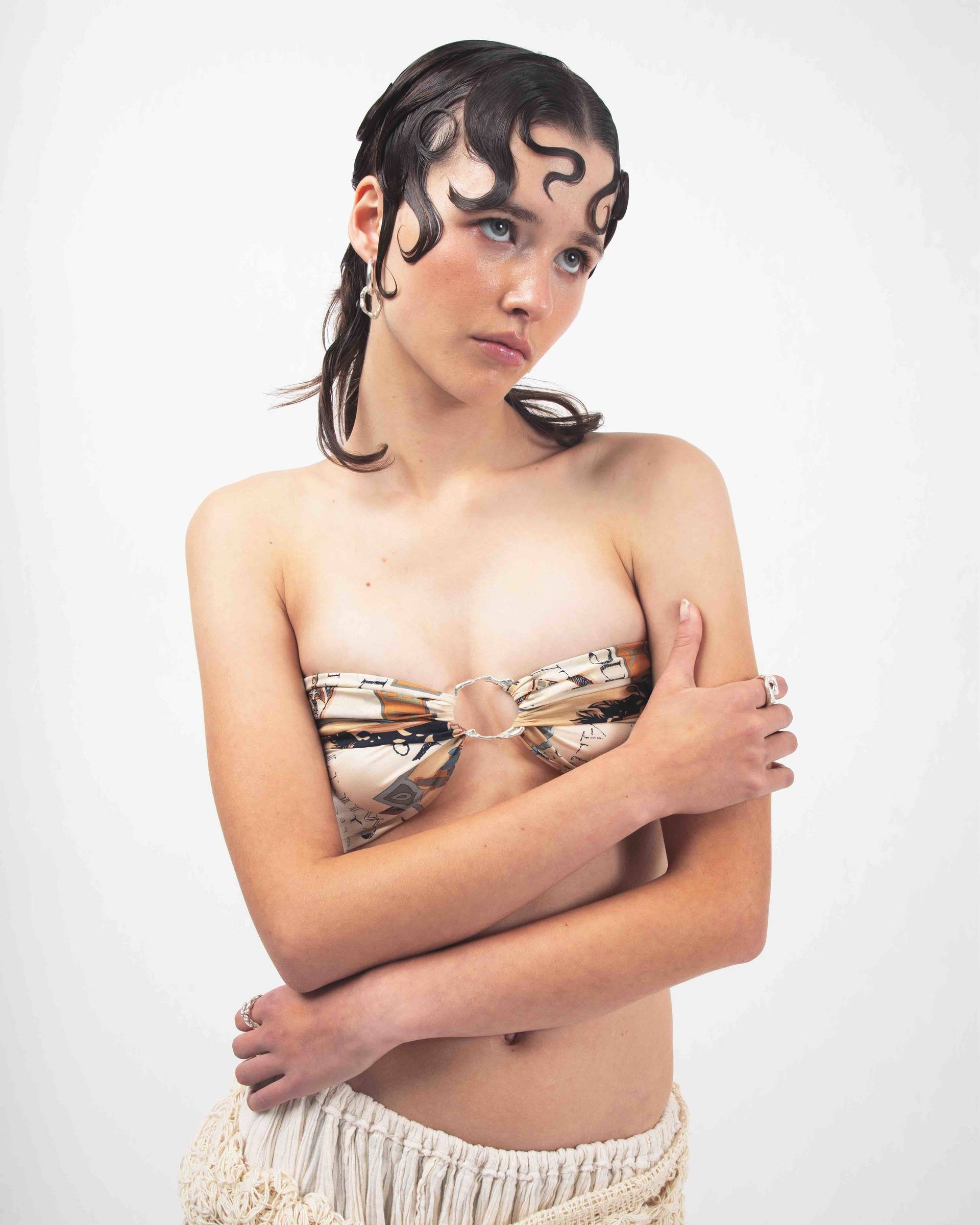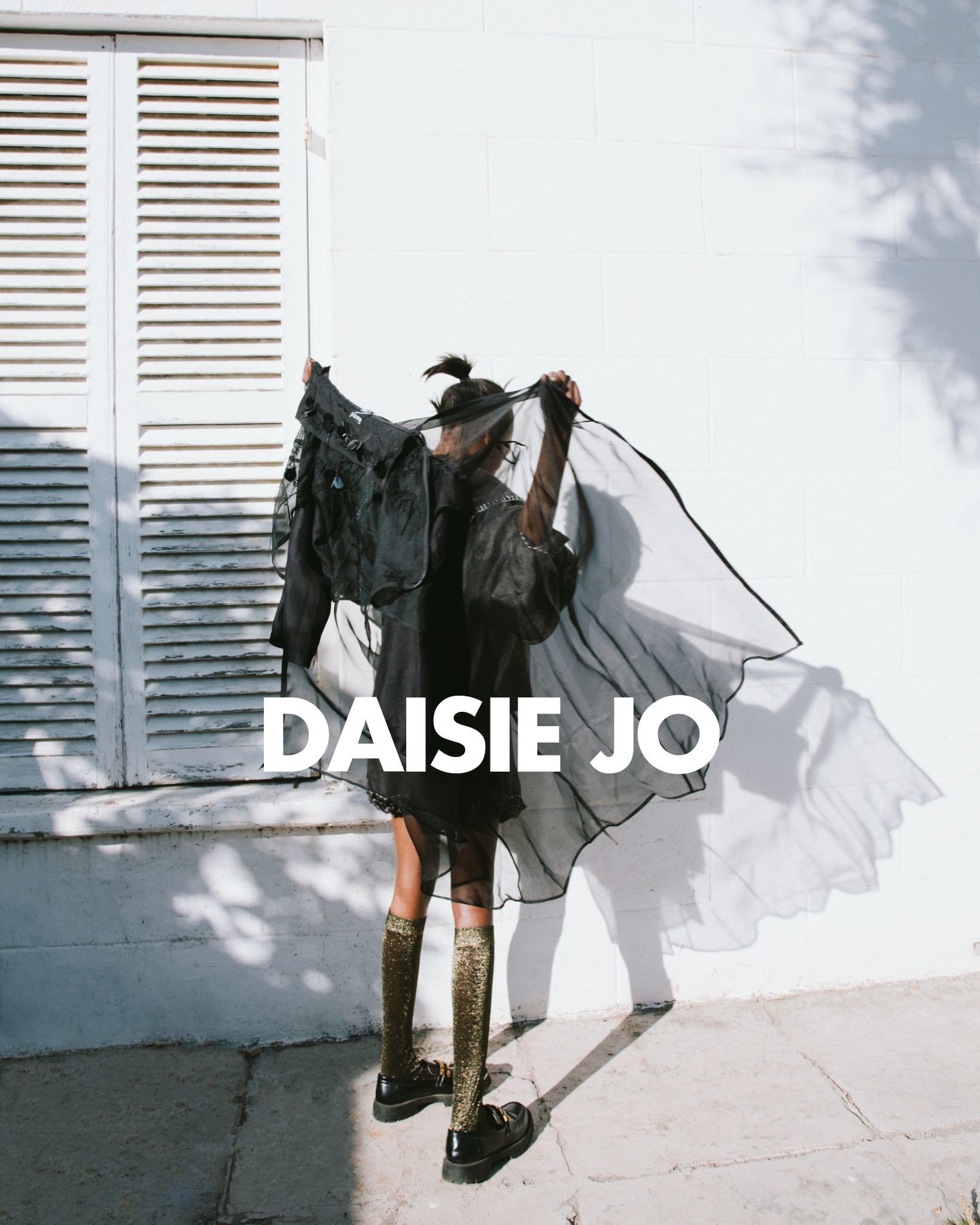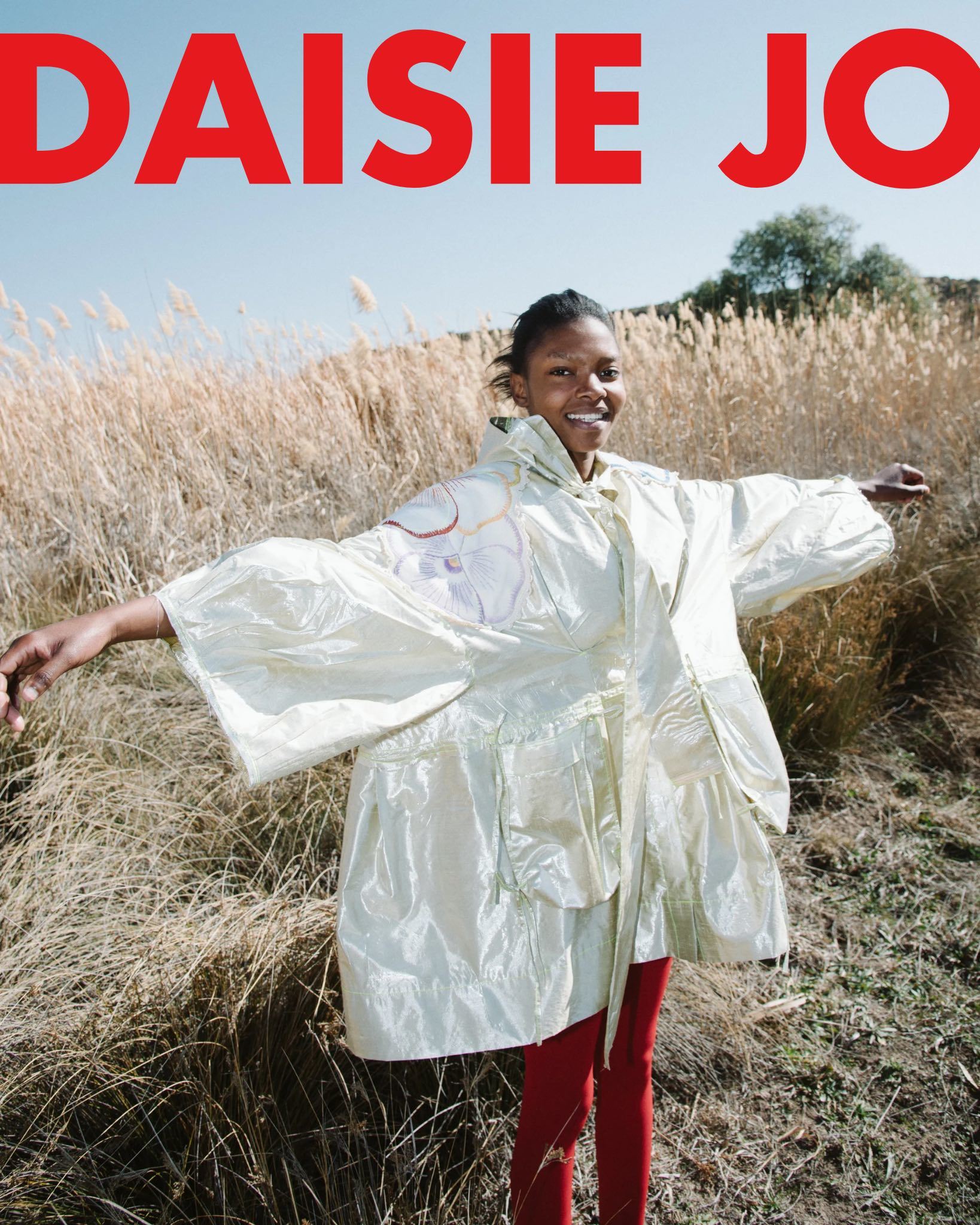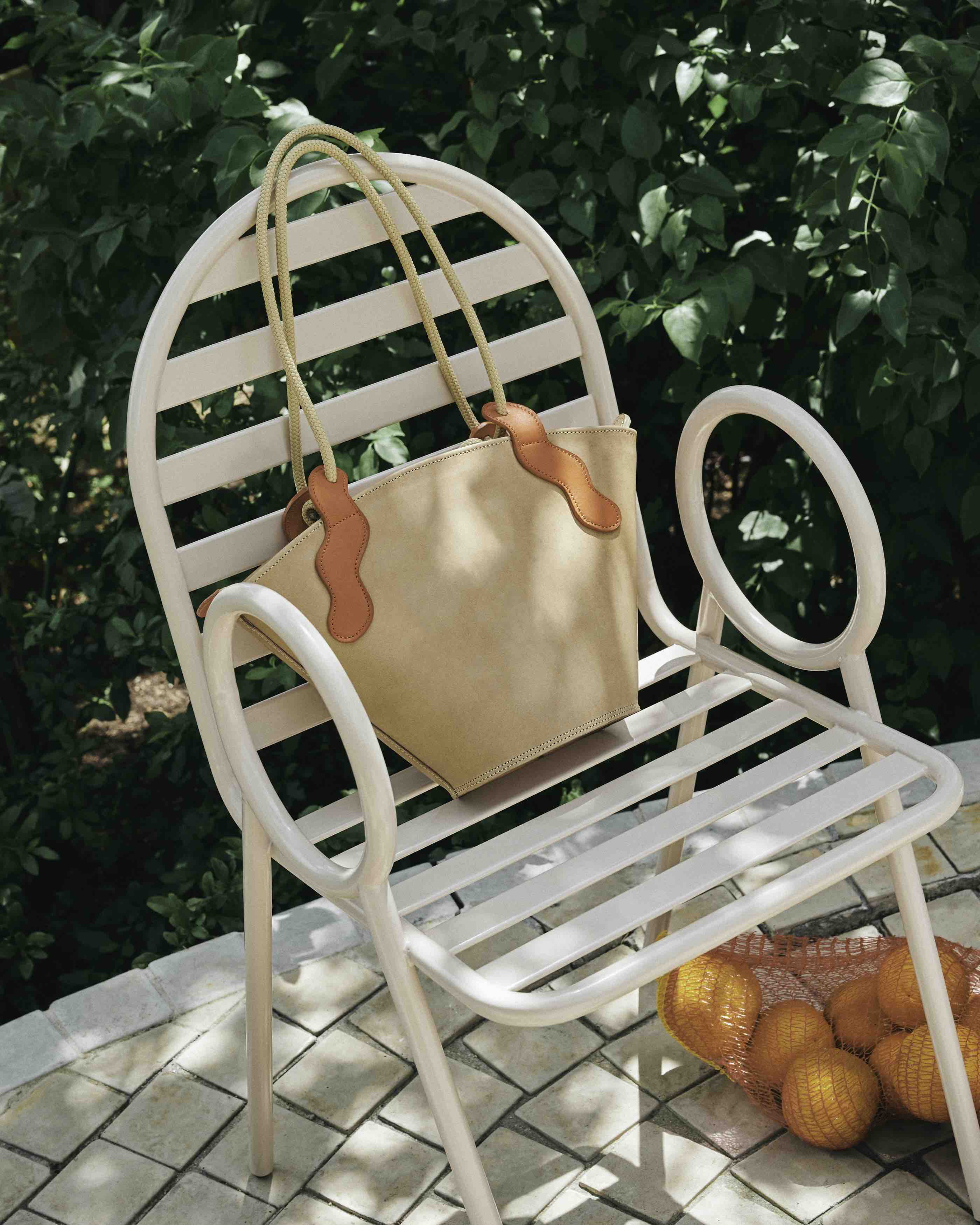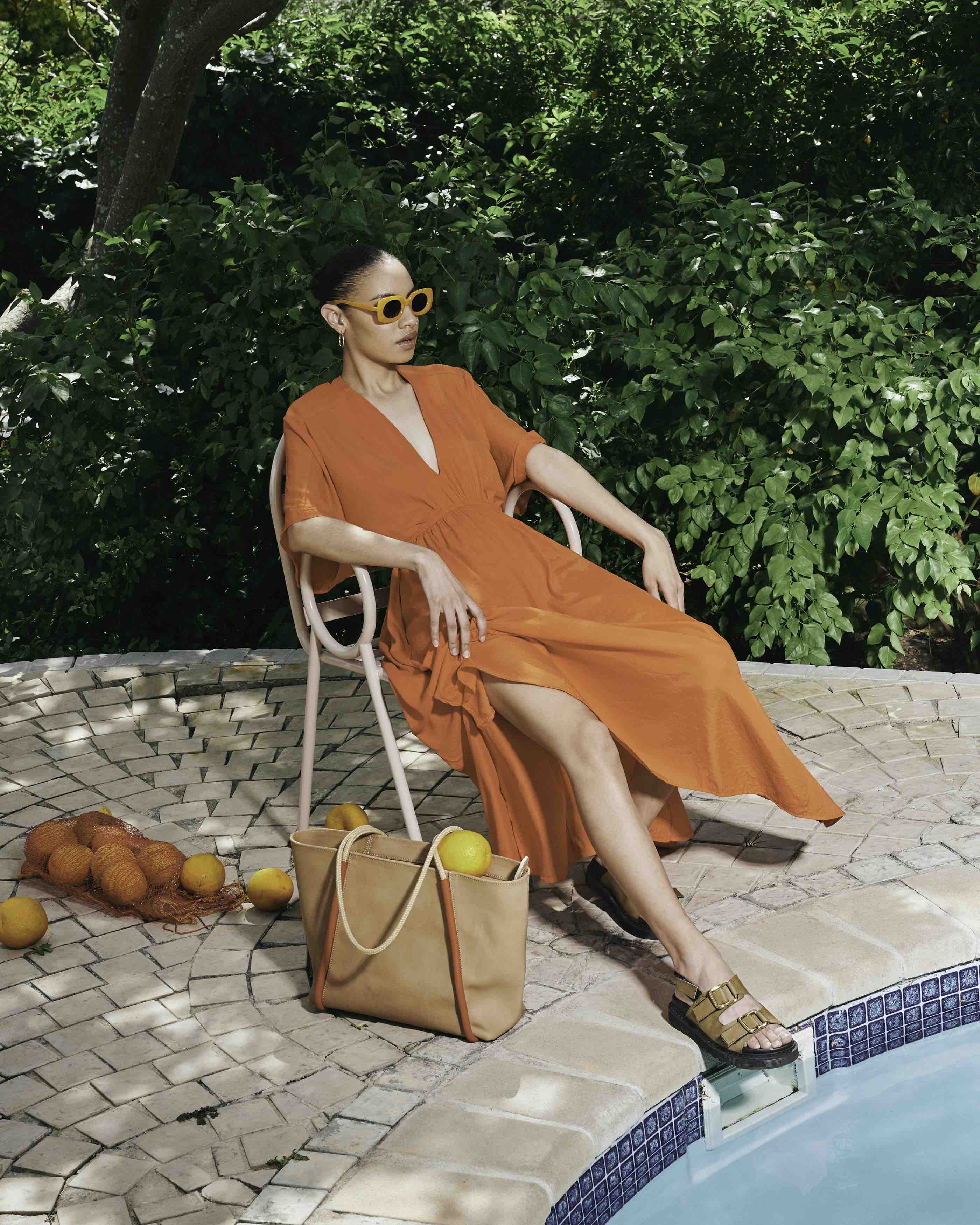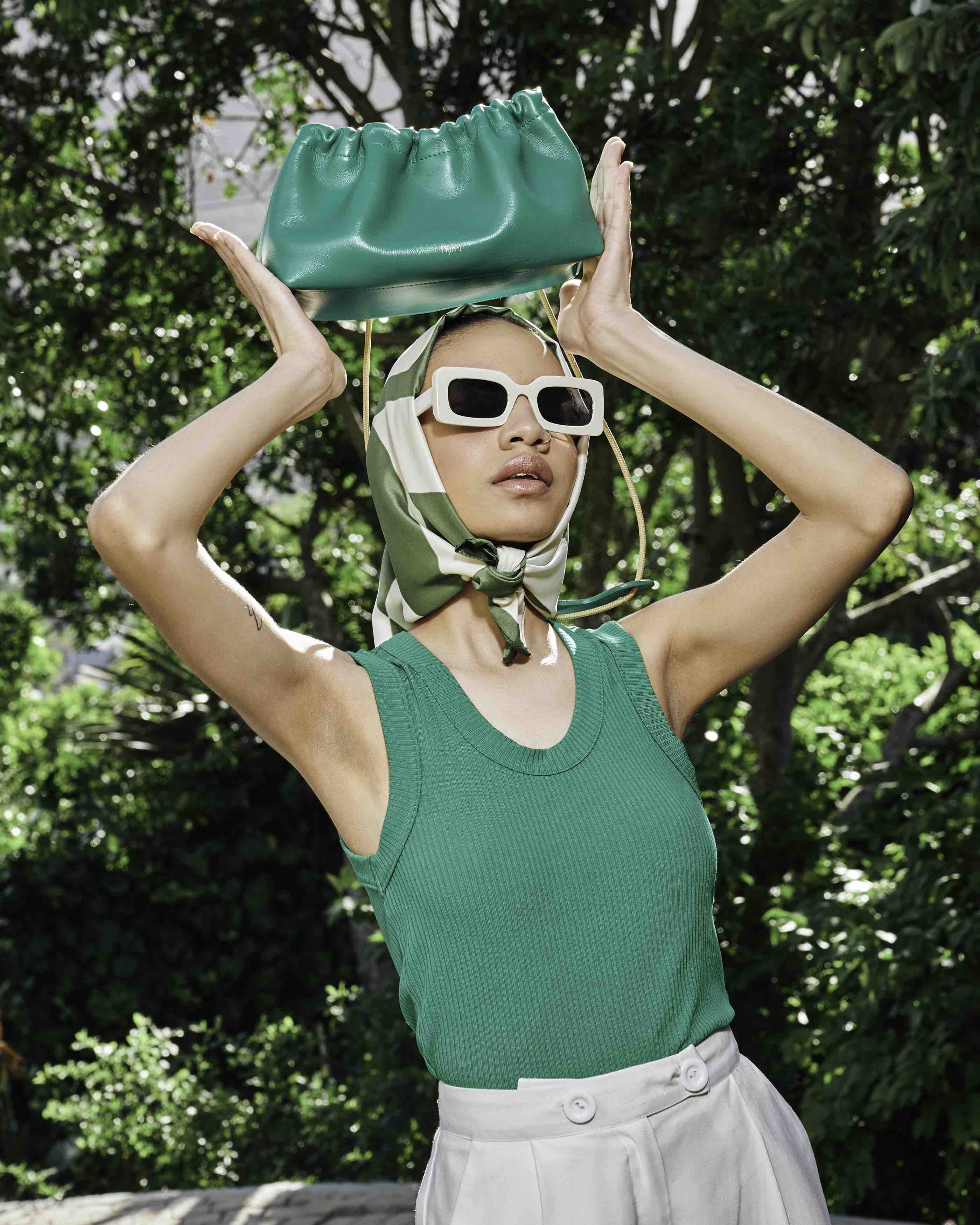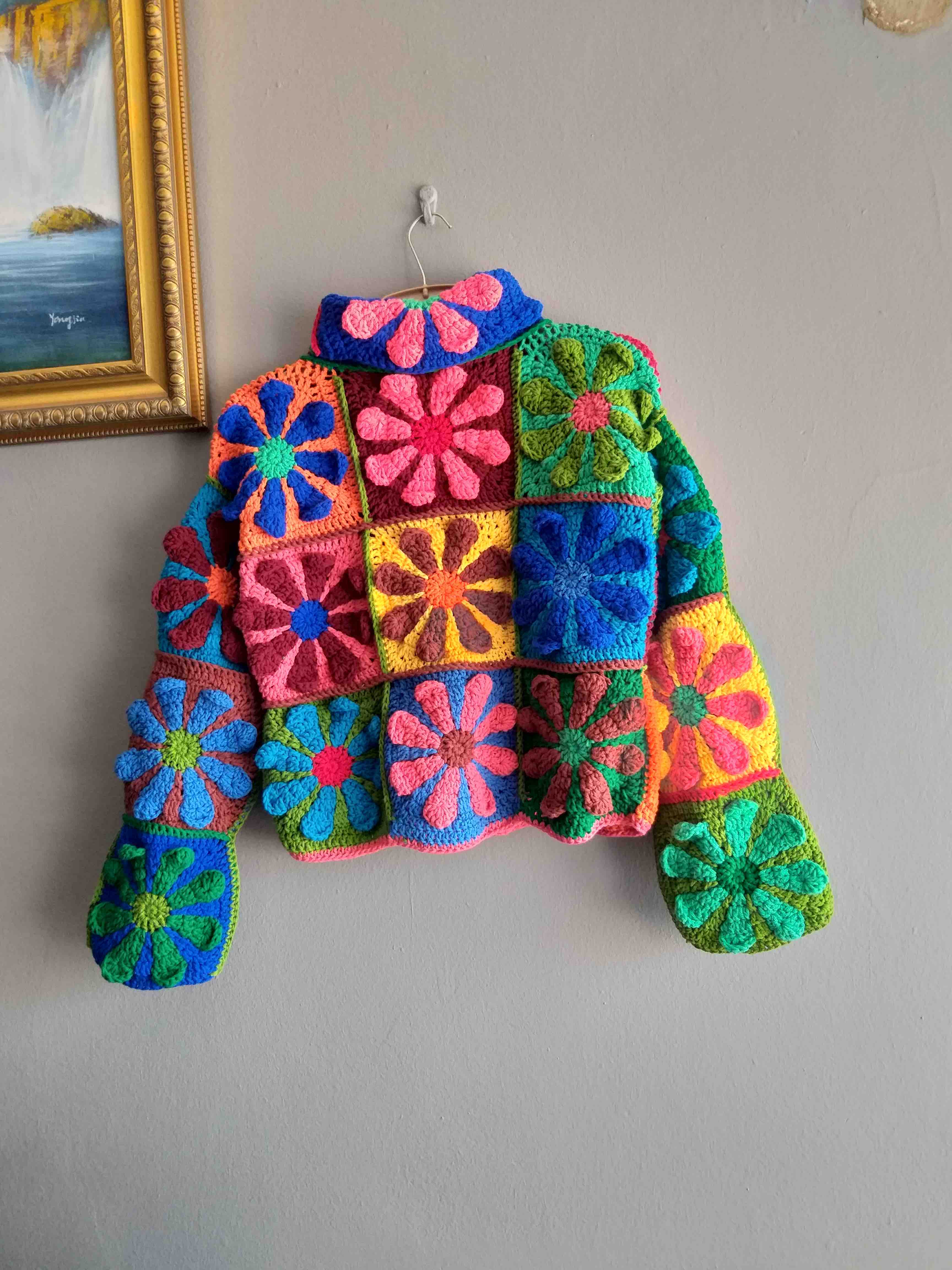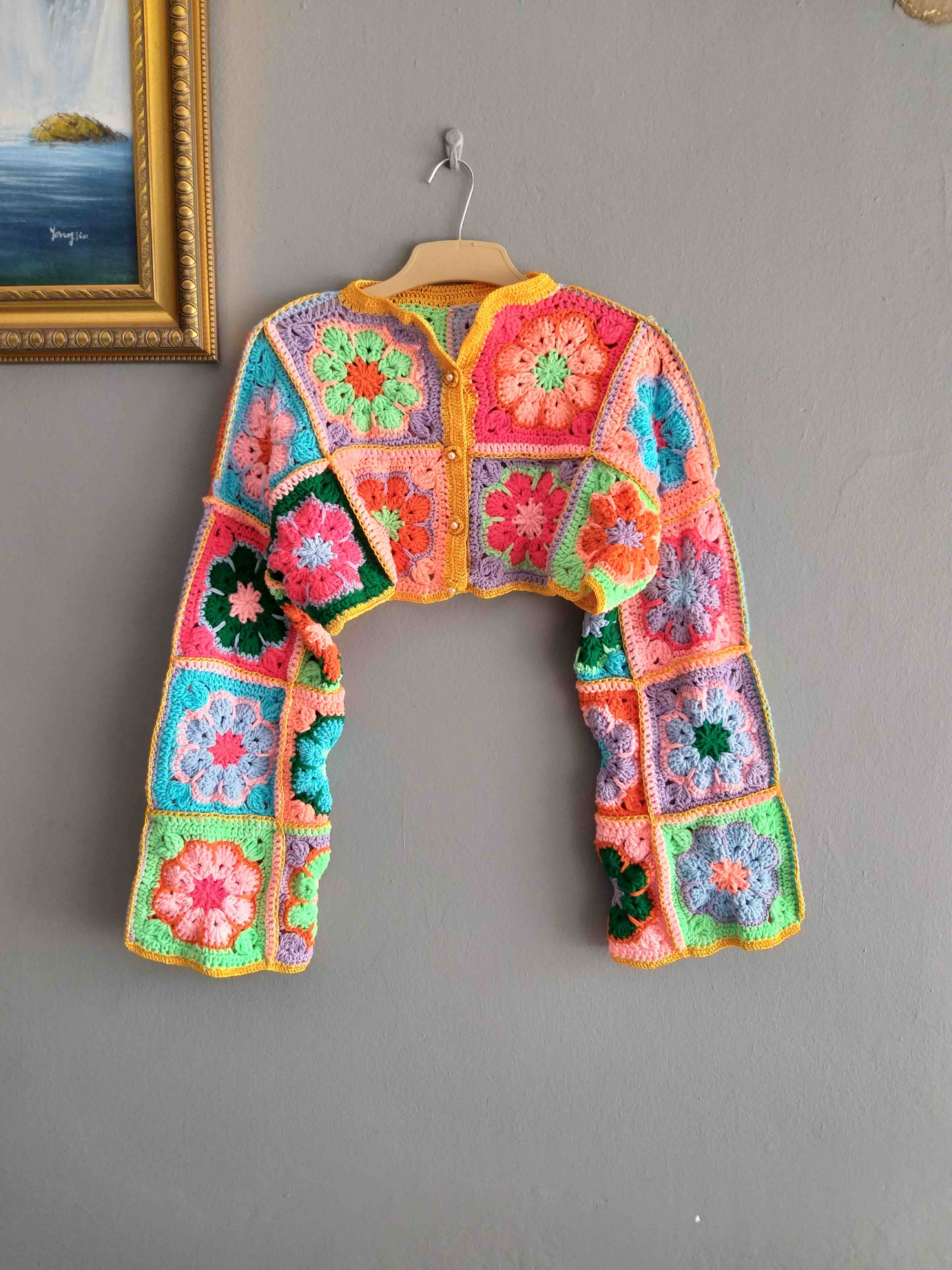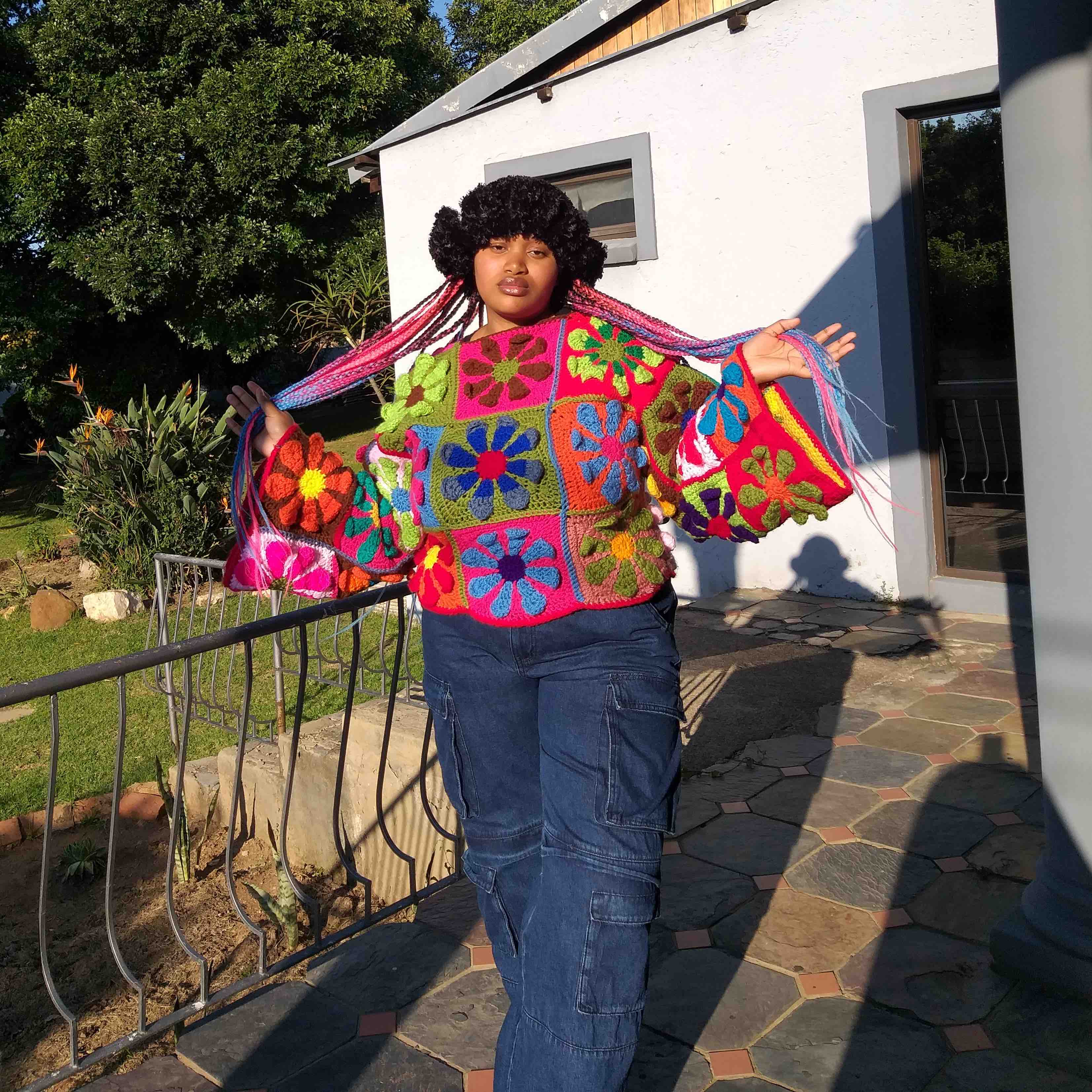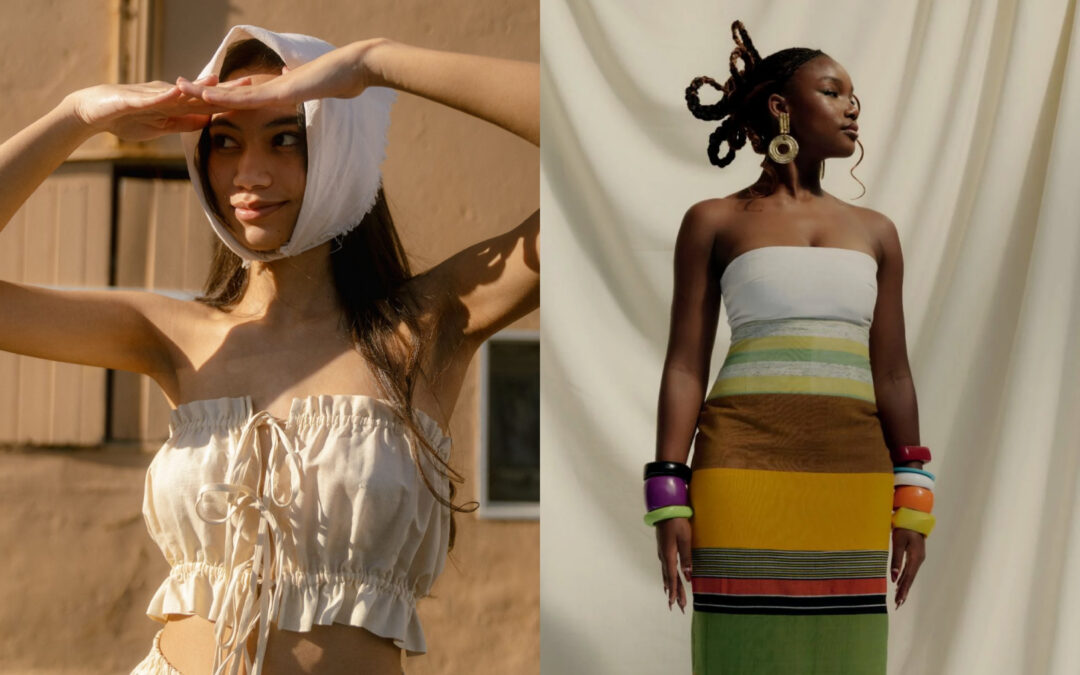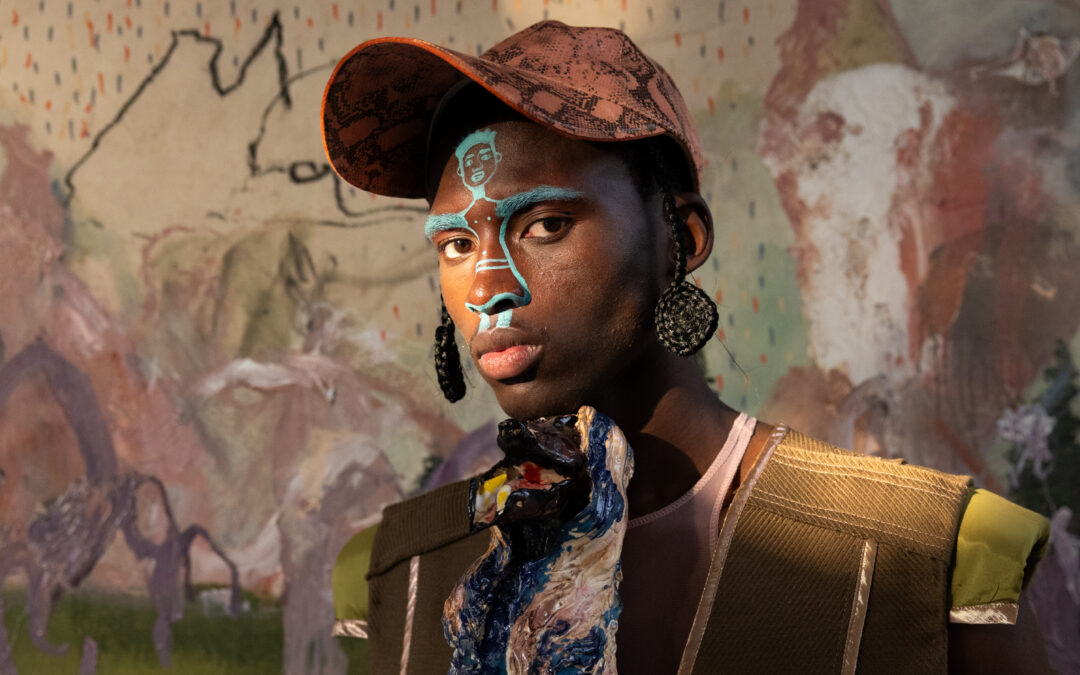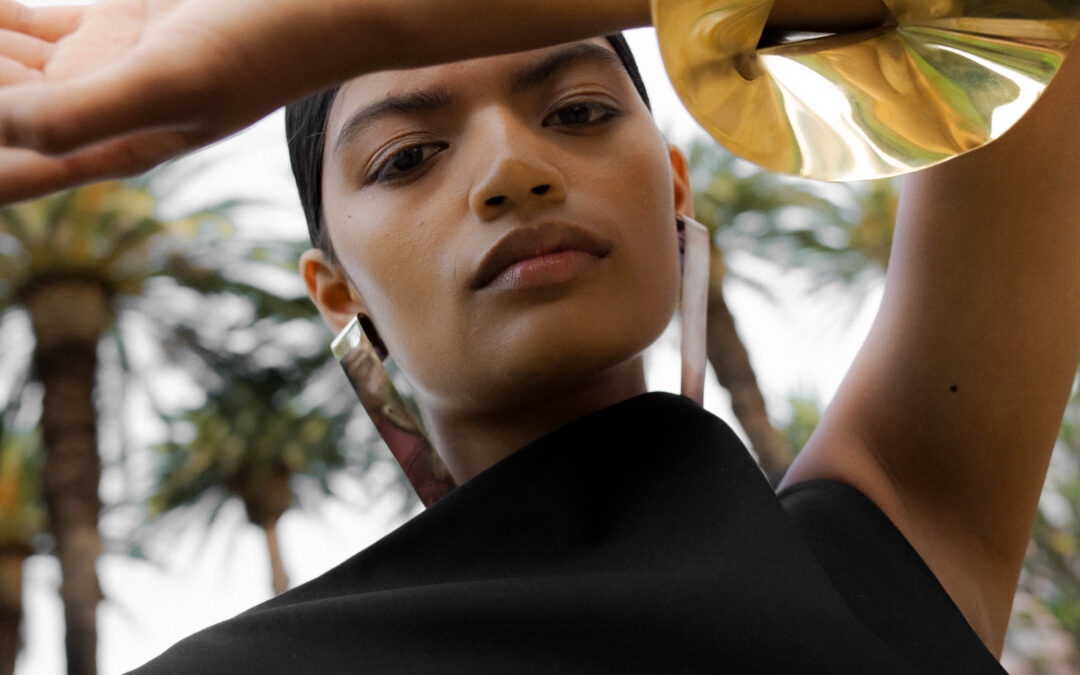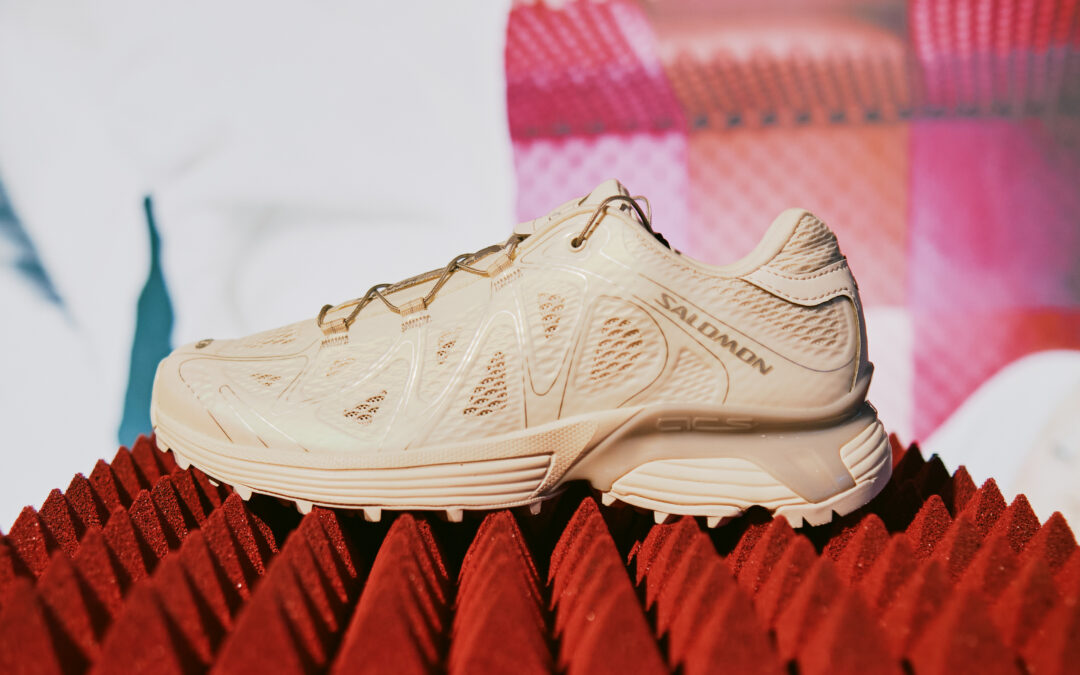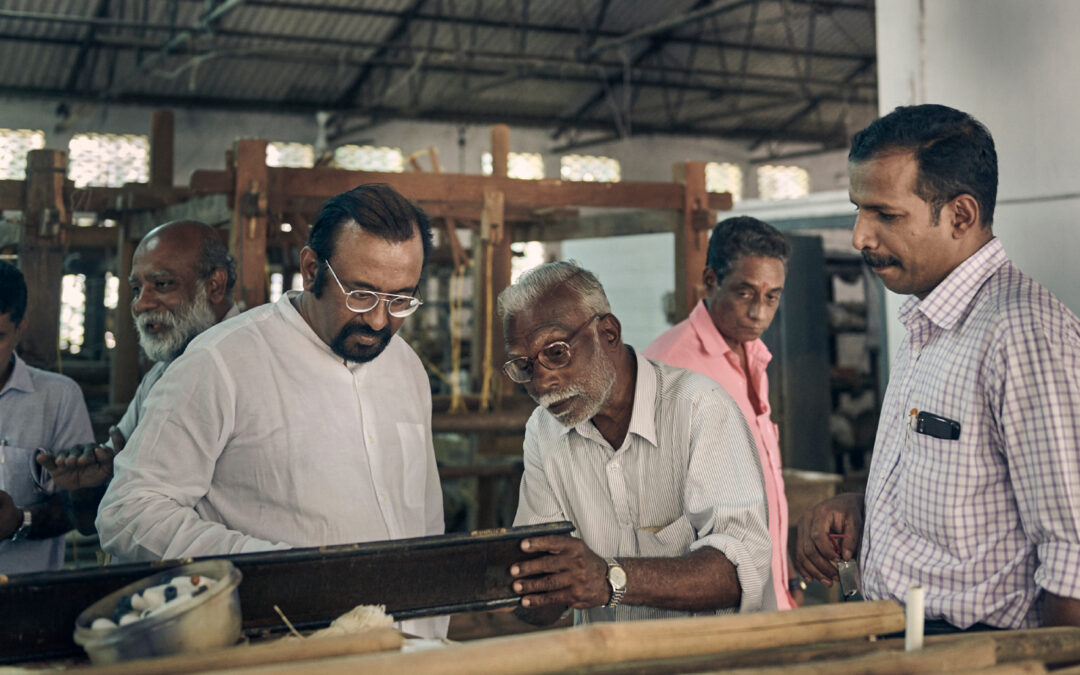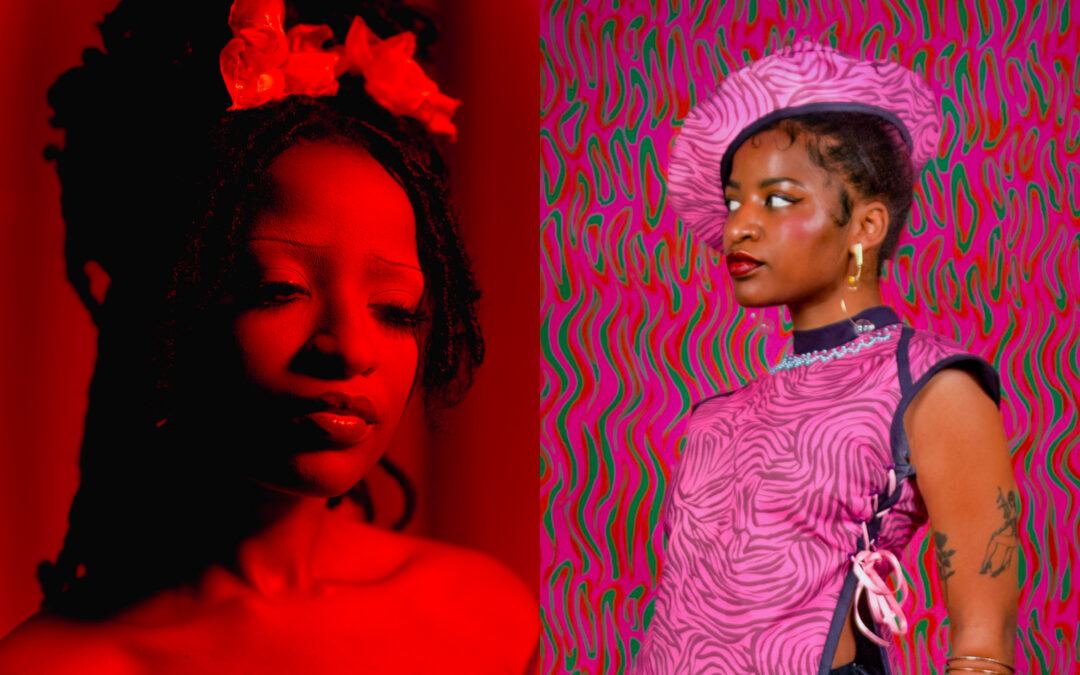I don’t know if it’s the state of the world or the endless, visual onslaught of our digitally-driven lives; but I have had a deep sense of fatigue around my love for fashion. So, in thinking about the first chapter of Interlude for 2024 – I knew instinctively that the topic would need to be gentle and embody slowness as its sartorial compass.
Handcrafting encompasses a wide variety of traditional, manual techniques. While it is a tradition of creating that has always formed part of fashion, it has become somewhat of a rare and precious feature. The machine age, with all its convenience, is generally the most efficient way for a brand (big or small) to do just about anything. While technological tools are incredible, embedding some form of handcrafting into one’s practice is a noble commitment to the preservation of makers as conduits of their own creative energy. This is not to say one can’t achieve a level of attentiveness with the use of tools – but that in a robust fashion future, handcrafting should always remain as an available pathway.
As it turns out, and not to my surprise, handcrafting is for the girls. Chapter 23 looks at six brands across jewellery-making, leather-making, crocheting and embroidery – and asks, why does handcrafting matter and what do these techniques mean to these six creators?
TSHEPISO JEWELLERY
To understand Tshepiso’s eponymous jewellery brand, is to note her background as a fine-art graduate. With a focus on form as a principle from where all else is possible, her fascination for crafting jewellery fuses her love for art and fashion; into profound talismanic objects for bodily adornment. I am a big fan – major – of Tshepiso’s work, which has been featured from Bubblegum Club to Vogue; as she breathes an etheric vision into the hardy, fire-born act of smithing.
While Tshepiso’s brand is focused on silver and metal she explains that, “I consider myself a metalsmith, I am however by trade a goldsmith. However, I am deeply interested in silversmithing and blacksmithing as these do lean more into my fine art background.” Forging, casting and forming metals is an ancient craft; Tshepiso explains the difference between goldsmithing, silversmithing and blacksmith, “goldsmithing is mainly jewellery and body oriented work. Silversmithing is more so object based, think silverware you only use on special occasions and that sort. Blacksmithing is also object based but the objects are made from harder materials such as iron, steel and are made to forge said jewellery and objects.”
As a graduate of Alchimia Contemporary Jewellery School in Florence, Italy, Tshepiso’s gift for wandering between form and the various techniques is matched only by her ceaseless, imaginative ways to breathe life into metals. As she explains, “my designs are drawn from the ebbs and flows of life which in itself contains a lot of personal meaning. During my goldsmithing studies we had a particular task to complete, in the end I created a neck piece that was made of broken soldering bricks, acrylic shards and pieces of zinc strung by fishing line. This became a catalyst for my designs, broken shards, slurry drips and granular pieces to make something whole. I don’t abide by the seasonal drops. Every single piece of jewellery that I make is a dialog with what I’ve made before which allows me the freedom of consideration and care.”
Tshepiso Jewellery photographed by Armand Dicker
Tshepiso Jewellery photographed by Zhentago Er for Schön! Magazine
Tshepiso Jewellery photographed by Armand Dicker for Nataal Media
BY PANASHE
Panashe Ndhlovu graduated from Design Academy of Fashion in 2023 and her collection was a stand-out, sensory experience for CEC, who were in attendance at the DAF grad show. Though ‘quiet luxury’ and minimalism echo the discretion and isolation of the times that we live in; Panashe’s emerging brand, By Panashe, is an ode to the pure, unbridled joy of crafting techniques. As Panashe explains, “I believe that self-expression is collaborating with our inner child. My design style is based on a mixture of things like the essence of my childhood and culture as well as the influences of my personal style like Harajuku style and maximalism.”
With exceptionally executed techniques like embroidery, quilting and more; Panashe’s sartorial vision is so full of life; reminding me of the child-like wonder of the eyes through which I used to see fashion (and eyes I hope to return to). On her graduating collection, Panashe notes that “this collection is about capturing feelings of nostalgia and seeks for us to work with our inner child as adults to heal and transport us back to the moments we were most content as children. The brand is my fantasy world that I created using techniques like quilting, crochet, kanzashi flowers, knitting and ruffling to successfully elicit feelings of healing and nostalgia.” I am so excited to see how Panashe’s brand grows and continues to employ such detailed-oriented traditions into South Africa’s sartorial landscape.
Imagery by Tśele for By Panashe
NÜUMAGOO
Jelly Prest’s jewellery brand nüumagoo is the new kid on the local block – and it’s already a massive hit. Self-described as ‘shiny, wearable goop’ – nüumagoo is filling that corner of every creative person’s mind reserved for chromatic, globular, organic shapes and forms. One of the most beautiful aspects of metalsmithing is that it takes mineral treasures from deep in the earth and through an intricate process, it becomes something entirely new; it’s why the line between smithing and alchemy has historically been razor-thin. Jelly’s approach has injected South Africa’s jewellery and fashion scene with something inarticulable; from hair charms to drippy-style rings, nüumagoo is perfect, dreamy and essential.
For Jelly, nüumagoo has become a vessel for her creative expression – on finding this medium, Jelly says that “I don’t know if I would call myself a silversmith! I use the cire perdue method, which involves me sculpting into wax and casting those sculptures in silver. Growing up I loved to paint and draw and thought I would make a career of it. However, I always felt the pressure of perfection which in the end made me give up all creative pursuits for most of my adult life. For five years I hadn’t touched a paint brush, a tool, or anything to create with. After some self work and lifestyle changes I started dabbling in ceramics 3 years ago which led to me majorly accepting that my “perfect” was imperfection, and that is OKAY! I guess that’s my ‘style’ – I seemed to overlook beforehand or rather, thought it wasn’t “good enough.”
Nüumagoo is the culmination of Jelly’s love for 3D mediums as both artful and functional. After being introduced to making jewellery by her partner Sam Maritz (whose brand is Ode), Jelly notes that “I like working with clay, it gave me the same satisfaction of taking an idea in my head, planning a working design, and then using my hands to mould, sculpt, and build a piece of art that I could create a purpose for. My background is in research and I can’t say I don’t love a little practicality, so I found that this medium allowed me to both use critical thinking as well as artistry.”
On a practical and meaningful approach to building a brand, Jelly says that “as far as fashion and practicality not going hand in hand…well, Nüumagoo wants to be part of the world of brands that believe that doesn’t always have to be true. I want to create quality pieces of art people can use for function and fashion and recycle into different styling options. Working with this medium is new to me and every mistake I make leads me to learn and pushes me to be innovative. I’m excited to see where it takes me! At the end of the day I just wanted to make art I like and want to use. And it’s been really amazing to see other people enjoy it too.”
DAISIE JO
“Honesty over perfection / at DAISIE JO we embrace our imperfections and humanness / it surfaces in the fabrics we source and the textile development of our garments / Our studio is a space where our craft is passed on from generations / it is important for us to use fashion to create new opportunities & train new generations / skill transferring / investing in quality / wearable & useful art”
From the Karoo, straight to the heart of effervescent beauty. It’s hard to put into words what Daisie Jo does – and has been doing for some years. I came across Daisie’s work when I first started writing about South African fashion (my interview with Daisie here is one of my favourites to date) and it has remained one of the most fascinating spaces in our sartorial landscape. Daisie creates wearable art; embroidery onto organza, cotton or raw silks – no two pieces are ever alike, and each piece builds upon a pretty profound life, led by Daisie – who remains in Karoo, emboldened by the land and its people to create beauty, colour and consciousness.
As the brands manifesto notes, “we focus on EMBROIDERY and fabric manipulation. We use various techniques to have a no waste process in the studio, every garment is hand cut & each detail carefully considered. Mindful creation, mindful consumption.”
PROJECT DYAD
Project Dyad is the brainchild of Jessika Balzer, for whom hand-crafting is expressed through leather-work and design. From Project Dyad’s Woodstock studio, the brand functions as a site for design-thinking (and execution), the preservation of tradition and nurturing of the Dyad community. As Jessika notes, “everything Dyad creates is informed by the principle of hand-crafting. Dyad started with a passion for creating things by hand and a passion for slow fashion.”
Informed by lines, shapes and the tactical (and innate pride) in using leather for its durability, Project Dyad’s incredible and perennial collection across bags, wallets and even coasters is an ode to the power of crafting as a form of resistance against mass-production, with Jessika noting that “the goal has always been harnessing expertise in a very traditional craft while infusing it with a contemporary design aesthetic and out-of-the-box thinking. The design process is tightly woven with that craftsmanship, it informs what’s possible, which boundaries can be pushed and if something can be reproduced many times. So in that way, our studio is built around craftsmanship. We take a lot of pride in making almost everything in-house in our studio in Woodstock, Cape Town. Every piece that leaves our studio is infused with the passion of the hands that made them. This thought brings me immense joy—I believe it transcends.”
ABRIELLA CROCHET
Gabriella Brown’s vision for crochet is kaleidoscopic; colours and shape, motivated by yarn, tell the tale of colour as one of most powerful sensory experiences. Gabriella’s brand, Abriella Crochet, is a handcrafting dream, as she says that “handcrafting is a special kind of art. Crocheting in particular allows me to do shapes and textures that machines can’t make. The thought that someone will be able to wear and appreciate an item that took me hours and days to complete is satisfying.”
Informed by Gabriella’s own longing for a colourful wardrobe that truly expresses her essence, Gabriella explains that “I started my crochet journey in 2021. I kept coming across beautiful crochet creations, I saw how people were able to express who they are through crocheting. The fact that not many shops made vibrant coloured clothing that speak for me, I saw it as an opportunity to create things I would like. At first I didn’t have enough money to buy crochet needles, so I carved my own out of a chopstick I had in the kitchen, and used my aunt’s old yarn to start practising. Thanks to my close friends who financially supported my business, I was able to grow and buy more materials and tools to continue exploring my creativity.” This idea of using her own carved needles out of chopsticks and the support of her community – well, I’m not sure if the ingenuity involved in handcrafting can better be explained than with this?
Imagery by Gabriella Brown for Abriella Crochet

